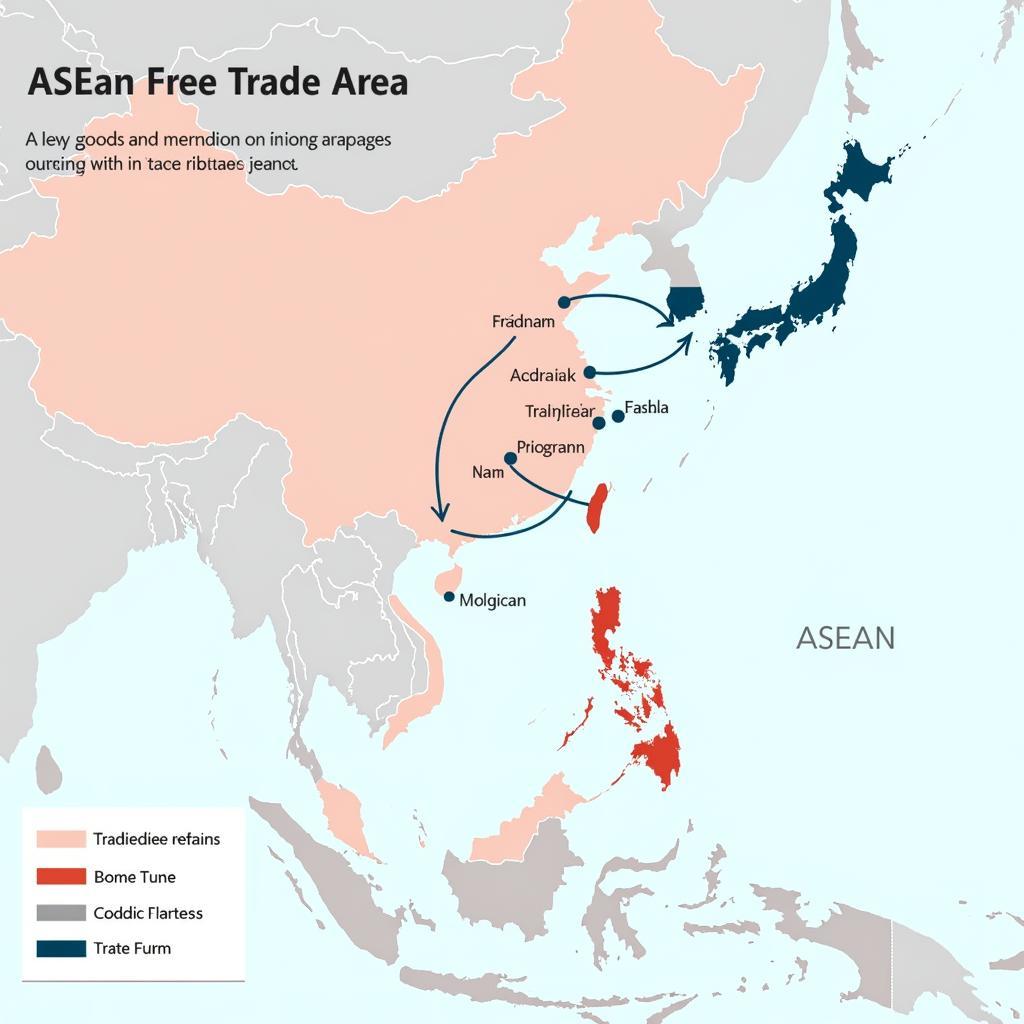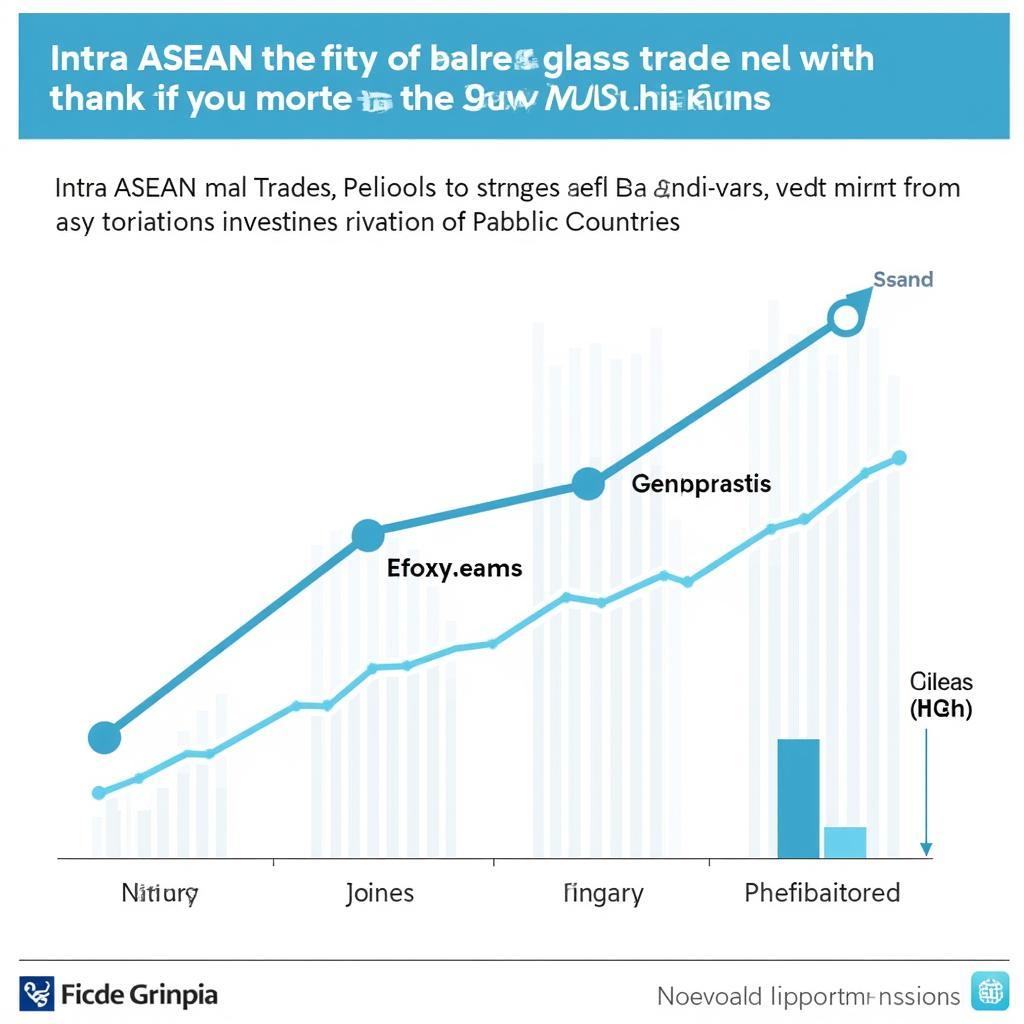The Association of Southeast Asian Nations (ASEAN) has become a cornerstone of regional stability and economic growth. Understanding the Aims And Objectives Of Asean is crucial to grasping its influence and potential. This article delves into the core principles driving this dynamic intergovernmental organization, exploring its evolution and impact on Southeast Asia and the world.
The Founding Principles: Peace, Prosperity, and People
ASEAN’s foundation rests on a commitment to regional peace and stability. The aims and objectives of ASEAN, as outlined in the Bangkok Declaration of 1967, focus on accelerating economic growth, social progress, and cultural development. This commitment extends to promoting active collaboration and mutual assistance on matters of common interest, ensuring peace and stability through adherence to the principles of the United Nations Charter. Forging a close and harmonious relationship among the member states, with a focus on respect for national sovereignty, is also a core tenet. Moreover, the organization seeks to enhance the region’s competitiveness on the global stage.
ASEAN integration, as discussed on aims and objectives of asean integration, further solidifies these goals by promoting deeper economic ties and cooperation.
Economic Cooperation: A Key Objective of ASEAN
One of the primary aims and objectives of ASEAN is to establish a single market and production base, facilitating the free flow of goods, services, investment, and skilled labor. This ambition is reflected in the ASEAN Economic Community (AEC) Blueprint 2025, which outlines strategies for enhanced economic integration. Through initiatives like the ASEAN Free Trade Area (AFTA) and the ASEAN Comprehensive Investment Agreement (ACIA), the organization seeks to reduce trade barriers and attract foreign investment, stimulating economic activity within the region. The goal is to create a dynamic and competitive economic bloc capable of thriving in the globalized world.
 ASEAN Free Trade Area Map
ASEAN Free Trade Area Map
Social and Cultural Development: Building a Shared Identity
Beyond economic goals, the aims and objectives of ASEAN emphasize social progress and cultural development. This encompasses improving the quality of life for its citizens, promoting social justice, and strengthening regional identity. Initiatives in education, healthcare, and environmental protection demonstrate ASEAN’s commitment to holistic development. By fostering cultural exchange programs and promoting understanding among its diverse populations, ASEAN aims to build a cohesive and harmonious community.
As described on the page define asean, the organization’s focus extends beyond economic and political spheres to encompass social and cultural aspects.
ASEAN’s Role in Global Affairs
What are the aims and objectives of ASEAN in the broader international context? The organization plays an increasingly prominent role in global affairs, advocating for the interests of developing nations and promoting multilateralism. ASEAN actively participates in international forums and engages with global partners to address shared challenges such as climate change, terrorism, and pandemics. By fostering dialogue and cooperation, ASEAN aims to contribute to a more peaceful and prosperous world.
“ASEAN’s strength lies in its collective voice and its ability to bridge diverse perspectives,” states Dr. Anya Sharma, a prominent Southeast Asian economist. “By working together, ASEAN member states can amplify their influence on the global stage and effectively address shared challenges.”
Challenges and Future Directions
While ASEAN has achieved significant progress, challenges remain. Narrowing the development gap between member states, addressing non-traditional security threats, and strengthening regional institutions are crucial for the future success of the organization. Adapting to the rapidly evolving global landscape and fostering greater inclusivity within the ASEAN community are also essential.
Professor Michael Nguyen, a leading expert on ASEAN politics, notes: “ASEAN’s future hinges on its ability to navigate the complexities of the 21st century. By embracing innovation and strengthening regional cooperation, ASEAN can overcome these challenges and continue to thrive.”
Conclusion
The aims and objectives of ASEAN represent a shared vision for a peaceful, prosperous, and integrated Southeast Asia. From its inception, the organization has played a pivotal role in shaping the region’s trajectory, fostering economic growth, and promoting regional stability. By continuing to uphold its core principles and adapting to emerging challenges, ASEAN can further solidify its position as a driving force for positive change in Southeast Asia and the world.
FAQs
-
What are the main aims of ASEAN?
The main aims of ASEAN are to promote peace and stability, accelerate economic growth, foster social progress, and enhance cultural development within Southeast Asia. -
How does ASEAN achieve its objectives?
ASEAN achieves its objectives through various mechanisms, including economic cooperation agreements, socio-cultural exchange programs, and diplomatic initiatives. -
What are some of the key challenges facing ASEAN?
Some key challenges facing ASEAN include narrowing the development gap between member states, addressing non-traditional security threats, and adapting to the evolving global landscape. -
How does ASEAN contribute to global affairs?
ASEAN contributes to global affairs by advocating for the interests of developing nations, promoting multilateralism, and engaging with international partners to address shared challenges. -
What is the significance of ASEAN integration?
ASEAN integration is significant as it aims to create a single market and production base, facilitating the free flow of goods, services, investment, and skilled labor within the region. -
What is the role of the ASEAN Secretariat?
The ASEAN Secretariat supports the work of ASEAN, coordinating activities, facilitating communication, and providing technical assistance to member states. -
How can I learn more about ASEAN?
You can learn more about ASEAN through the official ASEAN website, academic publications, and reputable news sources. You can also explore articles like ase utra northstar moderator and ase deals lifts on this website.
For further details on the ASEAN Pension Fund, please visit ase ppf.
If you need further assistance, please contact us at Phone Number: 0369020373, Email: aseanmediadirectory@gmail.com or visit our address: Thon Ngoc Lien, Hiep Hoa, Bac Giang, Vietnam. Our customer service team is available 24/7.
